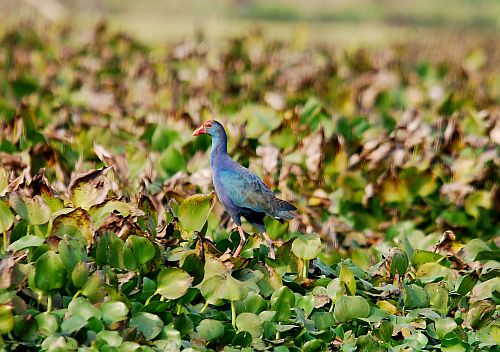Biodiversity constitutes an important aspect of global wildlife resources. It is important to note that major global biodiversity hotspots are located in developing and under developed nations scattered across different continents. Unfortunately, the socio-economic conditions in these poor but natural resource-rich nations along with their nascent human population, lack of employment opportunities, political unrest and related anthropogenic pressures have serious impacts on local biodiversity. Rapid habitat loss and habitat fragmentation of various species, poaching, illegal wildlife and pet trade on exotic species, illegal harvesting of wildlife and rare plants for non-judicious pharmaceutical and allied industries, extensive grazing in restricted forest areas by local livestock and ranch animals, forest fires, illegal human encroachments into forested areas, extension of industrial and agricultural hubs into virgin forests are gradually destroying the extremely fragile local ecosystem and highly endangered biodiversity. It is, therefore, extremely essential to call for the attention of the academics, researchers, wildlife and nature enthusiasts as well as the commonalty towards global challenges of biodiversity conservation. India being a country rich in biodiversity has a major stake in the global biodiversity conservation. We all need to work passionately in raising awareness and establishing a common platform to work for global biodiversity conservation to the best of our ability.



Since 1974, every year United Nations Environment Program (UNEP) declares a message about specific environmental issues to the people on 5th June observed as ‘World Environment Day`. The prime concern behind such messages is to make aware people about various environmental crises of earth and to act accordingly to save this only living planet. UNEP, in 2010, gives us the message –‘Many Species, One Planet, One Future’ to save the endangered and threatened species of wildlife and plants. Extinction of species is a natural process. Now, scientific evidences reveal that the current rate of extinction is not only alarming but much higher than natural and even any past rate throughout geological time scale. In every twenty minutes one species is now lost forever from this planet. Ecologists strongly indicate higher rate of habitat loss is the predominant force driving this alarming rate of species extinction.

In such bleak and dismal arrays of information there is an incandescent spurt of hopeful effort to conserve biodiversity, especially avifauna, by some local people in Chupi wetland; located in the Burdwan district of the eastern India state of West Bengal. The district is located around south central part of the state. The area of the Chupi wetland is approximately 3.15 square kilometres. This wetland is a stagnant U-shaped ox-bow lake formed by the changing course of River Ganga (Ganges) extending east to west. The length of the ox-bow lake is about 10 kilometres.

The Chupi wetland is rich in biodiversity. One can easily discern underneath a huge variety of zooplanktons and phytoplanktons through the crystal clear water of this wetland. Besides this, multiple species of fishes, toads, crabs, molluscs and insects are also found here. Every winter many species of migratory birds arrive here for these palatable foods. These birds come here crossing some thousands miles mainly from distant Siberia (Russia), Middle-Asia, Europe, Mongolia, China, Bhutan, Nepal, Ladakh (northern India) and from other areas of the Himalayas. They normally remain in the Chupi wetland for the entire winter season from December to February and go back to their abode at the end of the winter. Interestingly, a few migratory species are seen to stay here permanently, like the Lesser Whistling Teal.

The species mainly found here include Gadwall, Mallard, Ruddy Shelduck, Northern Pintail, Ferruginous Pochard, Red Crested Pochard, Lesser Whistling Teal, Open-bill Stork, Common Coot, Osprey, Small Pratincole, Terek Sandpiper, River Tern, Black-winged Stilt, River Lapwing, Spoonbill, Hoopoe, Cotton Pigmy Goose, Red vented Bulbul, Drongo, Pheasant Tailed Jacana, Greater Painted Snipe, Pond Heron or Paddy Bird, Egret, White Wagtail, Purple Moor Hen, Bronzed Winged Jacana, Field Sparrow, Grey Headed Lapwing, Cormorant, Darter, Crow Pheasant, Red Wattled Lapwing, Purple Heron, Jacana, Kingfisher, Pied Kingfisher, Green Bee Eater, Oriole, Woodpecker and so on.

As thousands of migratory birds make this wetland their favourite winter destination; this part of West Bengal quickly became one of the most talked about regions for poaching and illegal capture of several migratory bird species. Poaching became a major menace here. Poachers used nets and poisoned paddy to mercilessly kill the birds. Some poachers put sharp iron hooks hiding in favourite foraging spots of these birds with food baits. The unsuspecting birds very often became nailed in throats to death while swallowing the foods. Some poachers with illegal guns floated upon tubes completely covering themselves with water hyacinth (Eichhornia crassipes (Mart.) Solms; Pontederiace) to indiscriminately shoot the helpless birds or capture them after being severely injured.

Nowadays illegal markets of these rare migratory birds involve hefty amount of money. While some birds are enmeshed for illegal trade, others are killed to quench the thirst for exotic bird meat. There is also a demand for eggs of these birds for making specialized food items. But, uncommonly, some native local people vehemently protested this illegal trade and capture of the rare species. They even did not step back from the gunpoint of the poachers. These people formed an organization named ‘Banobeethi’ (A Forest Thoroughfare) to protect the migratory birds and to educate other people about the value of these rare species. By their passionate effort Chupi wetland has slowly transformed into a safe haven for these birds. This, certainly, is a dazzling and infrequent example of environmental movement to save biodiversity even at the risk of their own lives.

Eminent Indian environmental lawyer, Mr. Biswajit Mukherjee, a path breaking green crusader and recipient of the prestigious ‘Indira Gandhi National Environment Award’ has joined these local inhabitants and has been engaged with the West Bengal State Forest Department to ensure protection of these birds to save local biodiversity. The Directorate of Forest Department has assured that they are seriously thinking over the matter for a broader and meaningful cooperation. We, the commonalty, also want more tightened security to protect these rare migratory birds because conservation of species is doubtlessly a key issue in the pretext of ecological democracy.

It is important that local residents and villagers should be made important stakeholders in the process of biodiversity conservation and this can effectively help in generating some alternative employment. Hiring permanent/temporary/contractual local labours, guards and wildlife staff trained for monitoring and surveillance, afforestation and participatory forest management programs, reconstruction of damaged vegetated areas and habitats and in conserving biodiversity and wildlife will be cheaper and much safer than bringing external labour force to an ecologically vulnerable region. Further, the involvement of local residents through employment and voluntary activities in biodiversity conservation will considerably make it easy to combat with poachers and illegal capture and trade of the helpless bird species. If local people are to be made actively involved in the conservation projects, the long term success of such vulnerable ecological habitats will definitely increase several folds.

Often it is necessary to extend the areas under conservation and it will be necessary to withdraw human residences for bringing a bigger section of vulnerable ecosystem under the umbrella of effective conservation management. The rehabilitation of the displaced people needs to be considered sympathetically so that they do not lose their natural livelihood and socio-cultural practices completely as a result of the conservation initiatives. If both processes are tied together empathetically and judiciously, smooth functioning of environmental protection together with modern industrial and agricultural developments in the line of socio-ecological progress will never be an impossible task. With the forces of development encroaching protected habitats, the existing habitats will never be as same as it was in its pristine state, but we can make it close to what it may be through sincere and dedicated efforts. Although extremely challenging, however, the task is not quite impossible.
Photo credits: Rahul Ray
Article contributed by: Rahul Ray and Saikat Kumar Basu
Related posts: